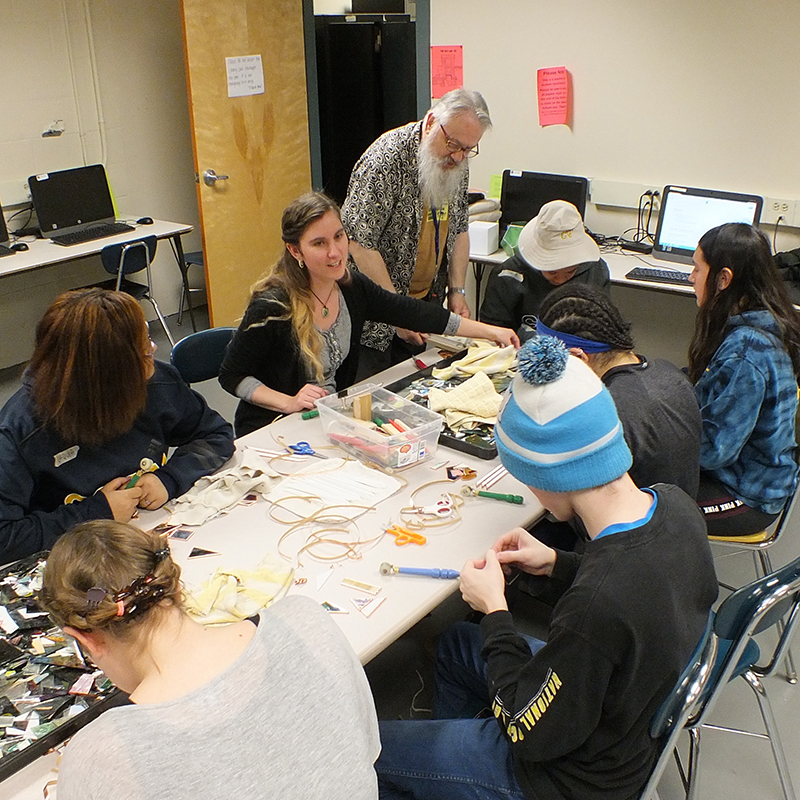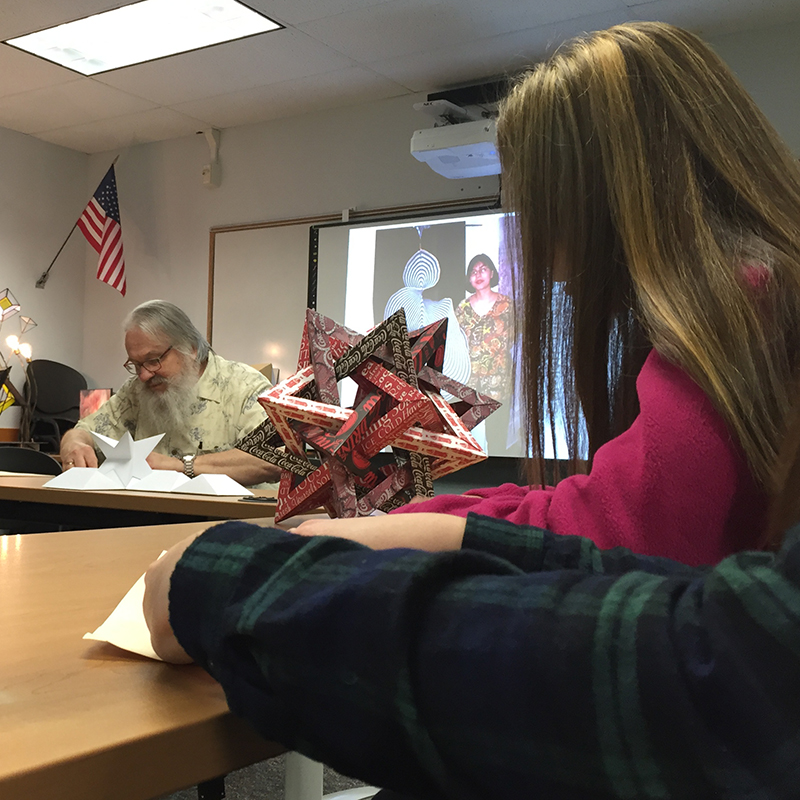As part of the STEAM grant “Making A Living Making Art,” geometric glass artist Hans Schepker conducts a workshop with ConVal students who create geometric figures out of glass.
Schepker explains the mathematical foundation of his art this way: “Two dimensional geometry as laid out by Euclid is mostly unchanged to this day. New geometries have been found and developed though, like tesselations (tilings), projective geometry and so on.”
“Solid geometry deals with space enclosed by surfaces, or faces. So we can say that the space of a cube is enclosed by six squares (hence the proper name hexahedron. Hexa is Greek for six, hedron means face). A square is a regular polygon (poly = many, gon =side) with four sides, that is all sides are the same, and all angles are the same. A regular polyhedron would therefore be made up of regular polygons. Only four more regular polyhedra are possible: the tetrahedron, made up of four (tetra = four) equilateral triangles,the octahedron (octa = eight) made up of eight equilateral triangles,the icosahedron (icosa = twenty) with twenty equilateral triangles and lastly the dodecahedron, comprised of twelve pentagons (do = two, deca = ten,2+10=12).”
“But that is not all,” he continues. “These five regular solids, the Platonic Solids, have relationships to one another. If all midpoints of the faces of a solid are connected to the face next to it we get another regular solid. In the case of the tetrahedron there will be another tetrahedron inside, albeit upside down from the original. When the midpoints of the faces of a hexahedron (cube)are connected to the faces next to it we find an octahedron, and, upon connecting the midpoints of the faces of an dodecahedron to the faces next to it we have an icosahedron. And this works both ways: an icosahedron has a dodecahedron in it, the cube is dual to the octahedron and the tetrahedron is, you guessed it, self-dual.”
Intrigued? Look at Schepker’s projects page on the web.





